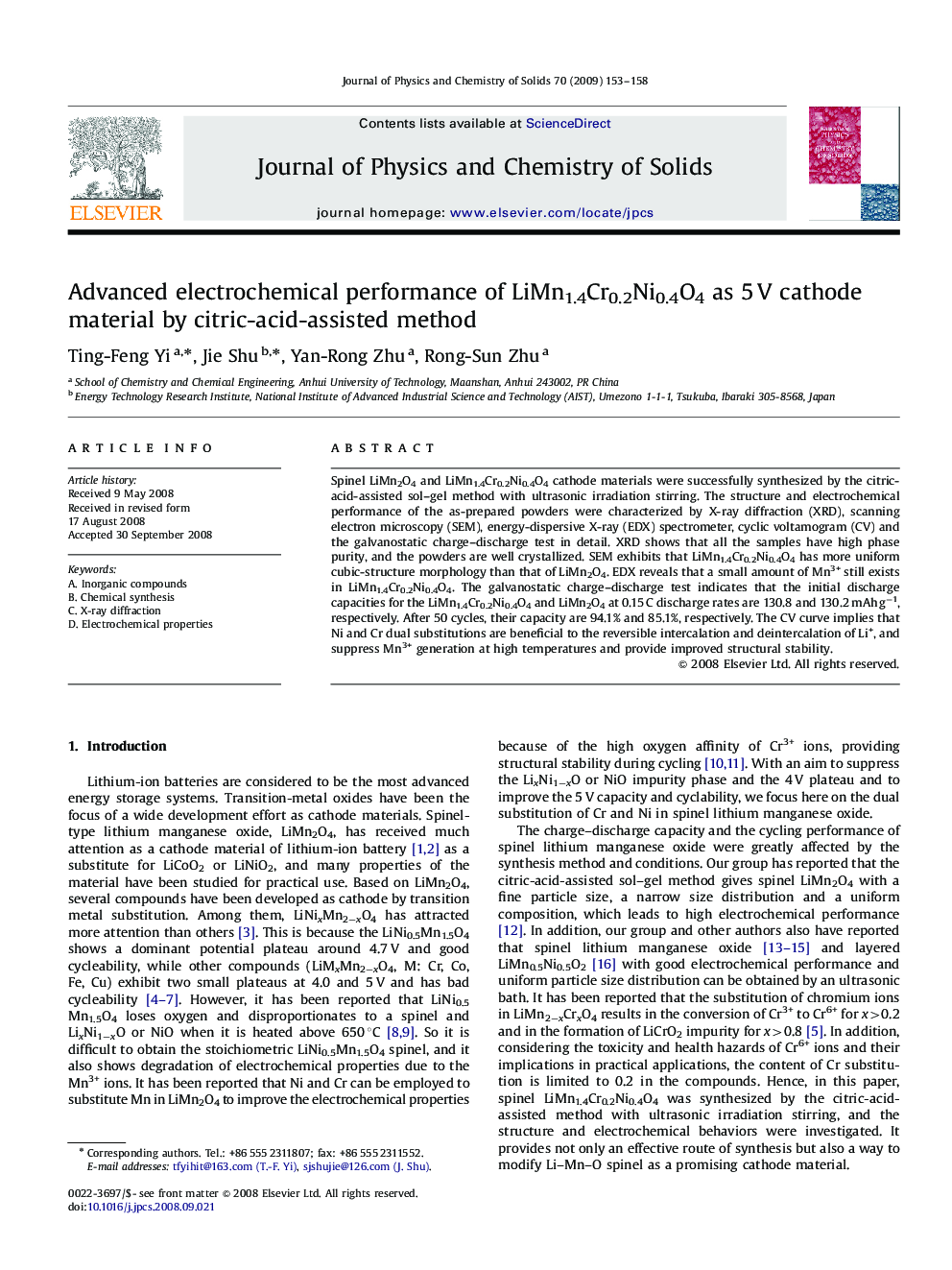| Article ID | Journal | Published Year | Pages | File Type |
|---|---|---|---|---|
| 1516925 | Journal of Physics and Chemistry of Solids | 2009 | 6 Pages |
Spinel LiMn2O4 and LiMn1.4Cr0.2Ni0.4O4 cathode materials were successfully synthesized by the citric-acid-assisted sol–gel method with ultrasonic irradiation stirring. The structure and electrochemical performance of the as-prepared powders were characterized by X-ray diffraction (XRD), scanning electron microscopy (SEM), energy-dispersive X-ray (EDX) spectrometer, cyclic voltamogram (CV) and the galvanostatic charge–discharge test in detail. XRD shows that all the samples have high phase purity, and the powders are well crystallized. SEM exhibits that LiMn1.4Cr0.2Ni0.4O4 has more uniform cubic-structure morphology than that of LiMn2O4. EDX reveals that a small amount of Mn3+ still exists in LiMn1.4Cr0.2Ni0.4O4. The galvanostatic charge–discharge test indicates that the initial discharge capacities for the LiMn1.4Cr0.2Ni0.4O4 and LiMn2O4 at 0.15 C discharge rates are 130.8 and 130.2 mAh g−1, respectively. After 50 cycles, their capacity are 94.1% and 85.1%, respectively. The CV curve implies that Ni and Cr dual substitutions are beneficial to the reversible intercalation and deintercalation of Li+, and suppress Mn3+ generation at high temperatures and provide improved structural stability.
